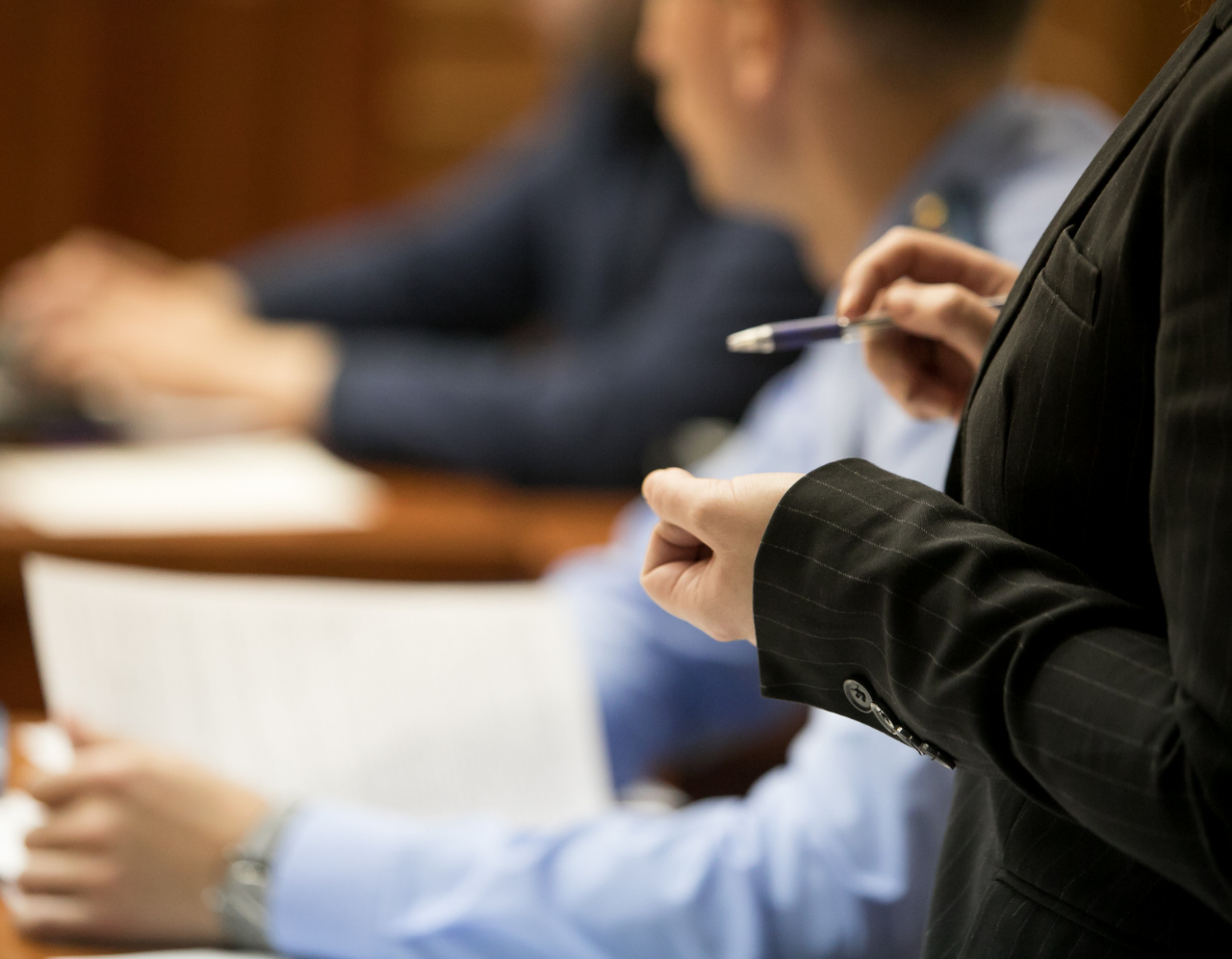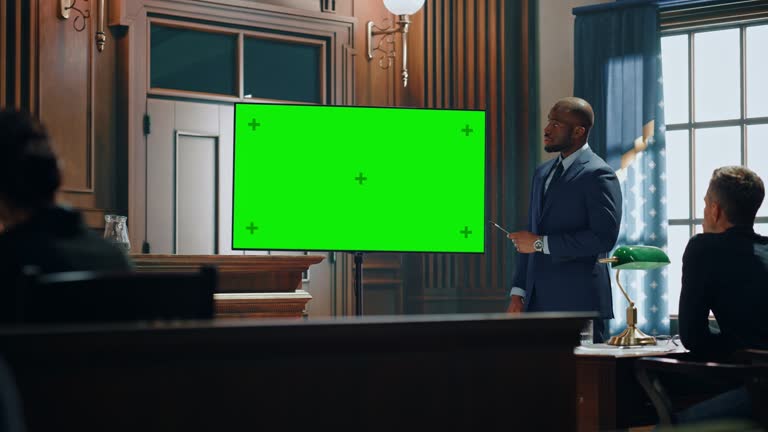Why Your Following Instance Demands a Solid Trial Presentation: Insights and Techniques for Legal representatives
Why Your Following Instance Demands a Solid Trial Presentation: Insights and Techniques for Legal representatives
Blog Article
Browsing the Intricacies of Test Presentations: Tips for Seamless Distribution and Engaging Debates
In the world of lawful procedures, the art of test discussion stands as an essential determinant of success. The complexities fundamental in test presentations call for a delicate equilibrium of skill, skill, and strategy.

Recognizing Trial Purposes
To effectively browse a test, it is important to have a clear understanding of the purposes that need to be accomplished. Prior to stepping into the courtroom, lawful groups have to define their objectives and wanted results. These purposes function as assisting concepts throughout the test, forming methods and affecting decision-making procedures.
Recognizing test purposes includes a thorough analysis of the situation, legal precedents, and the customer's best rate of interests. Trial Presentations. It calls for a careful assessment of the truths, identifying essential concerns, and expecting possible challenges. By establishing measurable and details goals, attorneys can customize their discussions and arguments to align with the desired outcomes
Additionally, a clear grasp of trial objectives enables legal groups to focus on evidence, witnesses, and lawful disagreements properly. It enables for the advancement of a coherent story that resonates with the discretionary, reinforcing the overall situation discussion.

Organizing Proof Efficiently
Having a clear understanding of trial goals lays the foundation for organizing evidence successfully in lawful procedures. By lining up the discussion of proof with the wanted end results of the trial, legal teams can reinforce their disagreements and enhance their persuasiveness.
One more crucial element in organizing proof efficiently is developing a sensible flow. Offering evidence in a systematic and consecutive manner can help build an engaging narrative that supports the legal disagreements being made. Furthermore, using aesthetic aids such as timelines, charts, or charts can better enhance the organization of evidence and help in clearing up complex partnerships or sequences of events.
Additionally, making certain that all proof provided is pertinent and acceptable to the case is necessary. Inadmissible or unnecessary evidence can take away from the strength of the disagreement and potentially hurt the trustworthiness of the offering event. A meticulous review and option procedure must be taken on to include just the most legitimately sound and impactful proof in the test presentation.
Crafting Persuasive Narratives
Crafting engaging stories plays a pivotal duty in providing influential arguments during legal process. A well-crafted story has the power to captivate the target market, stimulate feelings, and eventually guide the decision in support of the here and now event. When constructing a narrative for a test discussion, it is important to establish a clear story that highlights essential points and attaches them in a coherent fashion. Begin by outlining the facts of the instance in a compelling fashion, guaranteeing that the series of occasions is simple to comply with. Present characters successfully, supplying background information that helps the audience recognize their inspirations and activities. Additionally, including brilliant summaries and engaging language can bring the narrative to life, making it extra remarkable for the discretionary. By weaving together proof, statement, and legal arguments right into a influential and natural narrative, lawyers can successfully advocate for their customers and boost the possibility of a favorable end result in the court.
Mastering Visual Help
Effective use of aesthetic help is essential to boosting the impact and clarity of trial presentations. Visual help, when utilized tactically, have the power to streamline intricate information, strengthen bottom lines, and leave an enduring impact on the discretionary. To grasp aesthetic help in test presentations, it is important to make certain that they are clear, concise, and relevant to the disagreements being made.
When integrating aesthetic help, such as graphes, graphs, timelines, or photographs, into a trial presentation, it is vital to maintain them aesthetically appealing yet specialist. The visuals need to complement the verbal arguments, providing a graph of the information being talked about without overwhelming the audience with unnecessary details.
Furthermore, practicing with the visual aids beforehand is vital to make sure a seamless shipment during the trial. Familiarizing oneself with the web content, changes, and timings of each aesthetic help can assist preserve the flow of the presentation and prevent technological glitches that might occur.
Supplying Impactful Closing Arguments
An engaging closing disagreement offers as the culmination of a test discussion, enveloping the core story and encouraging the discretionary in the direction of a positive choice. To deliver an impactful closing disagreement, it is crucial to succinctly recap key factors, highlight the strengths of your case, and resolve any type of weaknesses in a strategic fashion. Going Here Begin by detailing the main arguments that sustain your client's placement, highlighting why the evidence offered throughout the test supports your story. It is vital to create a feeling of cohesion and quality, directing the court and court towards the preferred conclusion.
Furthermore, including psychological allure can further strengthen your closing disagreement. Eventually, a well-crafted closing debate need to leave a lasting impression, compelling the judge and jury to rule in your client's favor.
Conclusion
To conclude, grasping trial presentations includes comprehending goals, arranging evidence, crafting narratives, using visual aids, and delivering impactful closing debates. By applying these techniques successfully, legal representatives can provide their situation effortlessly and make compelling disagreements in the courtroom. It is essential to navigate the complexities of test discussions with precision and skill to achieve success in lawful process.
By straightening the discussion of evidence with the desired outcomes of the test, lawful teams can strengthen their debates click this and boost their persuasiveness (Trial Presentations). To grasp visual aids in test presentations, it is important to guarantee that they are clear, concise, and pertinent to the disagreements being made
A compelling closing debate offers as the culmination of a trial presentation, enveloping the core story and persuading the court and court web link towards a desirable choice. Begin by describing the main debates that support your customer's setting, emphasizing why the proof presented throughout the test supports your story.In final thought, mastering test presentations entails comprehending purposes, arranging evidence, crafting narratives, utilizing aesthetic help, and providing impactful closing debates.
Report this page